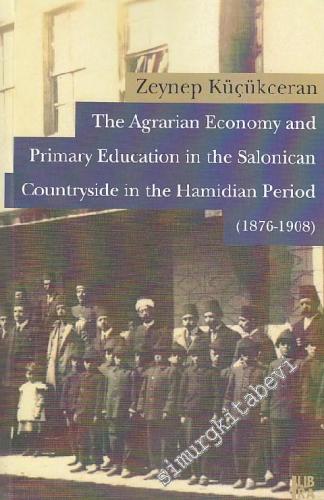#smrgKİTABEVİ The Agrarian Economy and Primary Education in the Salonican Countryside in the Hamidian Period 1876 - 1908 -

Table of Contents
Acknowledgements
Chapter 1 - Introduction
Chapter 2 - The Organization of The Education System
The Central Organization of Education System
The Development of Bureaucratic Organization
A Shift From Sıbyan to İbtidai?
The Change in the İbtidai School Curriculum
The Coexistence of Sıbyan and İbtidai Schools
The Provincial Organization of the Education System
The Bureaucratic Level
The Provincial Education Councils and Provincial Education Directors
Expanding the Organization To The Smaller Administrative Units
The Provincial Education Inspectors
The Reports of the Inspectors, Members of Education Councils and Education Directors
Conclusion
Chapter 3 - Salonica
The General Character of Agriculture In The Region
The Financial Features of Agriculture
The Agricultural Products
The works in Agricultural Season
How Agriculture Govern the Lives of People: The Observations of Frederick G. Abbott
Number of Schools
The Problems in Estimating the Actual Number of Schools and of Students
Conclusion
Chapter 4 - Agrarian Economy and Primary Education
Economic Difficulties and Education
Educational Expenses and Other Problems
Financing of Primary Schools: Applications, Institutions and Corruptions
The Office of Village Head (Muhtar)
Educators in Tobacco Business
The Imam-Teachers
Rejection of Schools: Affording the Expenses as an Excuse or as a Reason?
Peasant Children Going To School
A Child's Desire to Attend School
Peasants' Attitudes Towards Schools and Teachers
Traditional Knowledge vs. Scientific Knowledge
Agricultural Books and Courses at the Primary School
Agricultural Schools and Model Farms
Conclusion
Chapter 5 - Conclusion
Appendix A - Table of Content of Çiftçilik Dersleri
Appendix B - Curriculum of The Agricultural School in Salonica
Appendıx C - Map of The Province of Salonica
Bibliography
Table of Contents
Acknowledgements
Chapter 1 - Introduction
Chapter 2 - The Organization of The Education System
The Central Organization of Education System
The Development of Bureaucratic Organization
A Shift From Sıbyan to İbtidai?
The Change in the İbtidai School Curriculum
The Coexistence of Sıbyan and İbtidai Schools
The Provincial Organization of the Education System
The Bureaucratic Level
The Provincial Education Councils and Provincial Education Directors
Expanding the Organization To The Smaller Administrative Units
The Provincial Education Inspectors
The Reports of the Inspectors, Members of Education Councils and Education Directors
Conclusion
Chapter 3 - Salonica
The General Character of Agriculture In The Region
The Financial Features of Agriculture
The Agricultural Products
The works in Agricultural Season
How Agriculture Govern the Lives of People: The Observations of Frederick G. Abbott
Number of Schools
The Problems in Estimating the Actual Number of Schools and of Students
Conclusion
Chapter 4 - Agrarian Economy and Primary Education
Economic Difficulties and Education
Educational Expenses and Other Problems
Financing of Primary Schools: Applications, Institutions and Corruptions
The Office of Village Head (Muhtar)
Educators in Tobacco Business
The Imam-Teachers
Rejection of Schools: Affording the Expenses as an Excuse or as a Reason?
Peasant Children Going To School
A Child's Desire to Attend School
Peasants' Attitudes Towards Schools and Teachers
Traditional Knowledge vs. Scientific Knowledge
Agricultural Books and Courses at the Primary School
Agricultural Schools and Model Farms
Conclusion
Chapter 5 - Conclusion
Appendix A - Table of Content of Çiftçilik Dersleri
Appendix B - Curriculum of The Agricultural School in Salonica
Appendıx C - Map of The Province of Salonica
Bibliography





















